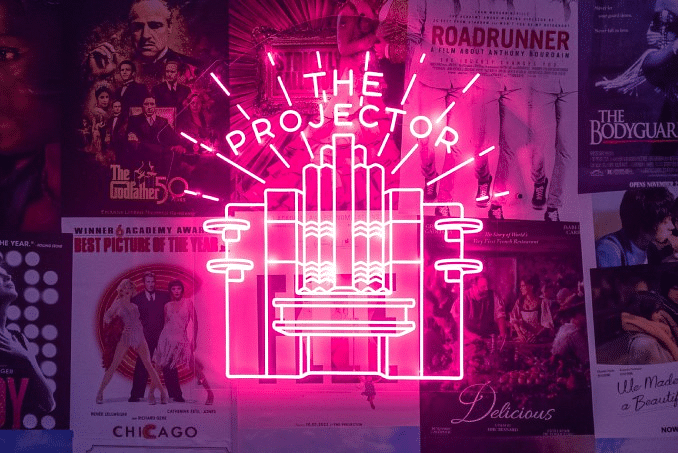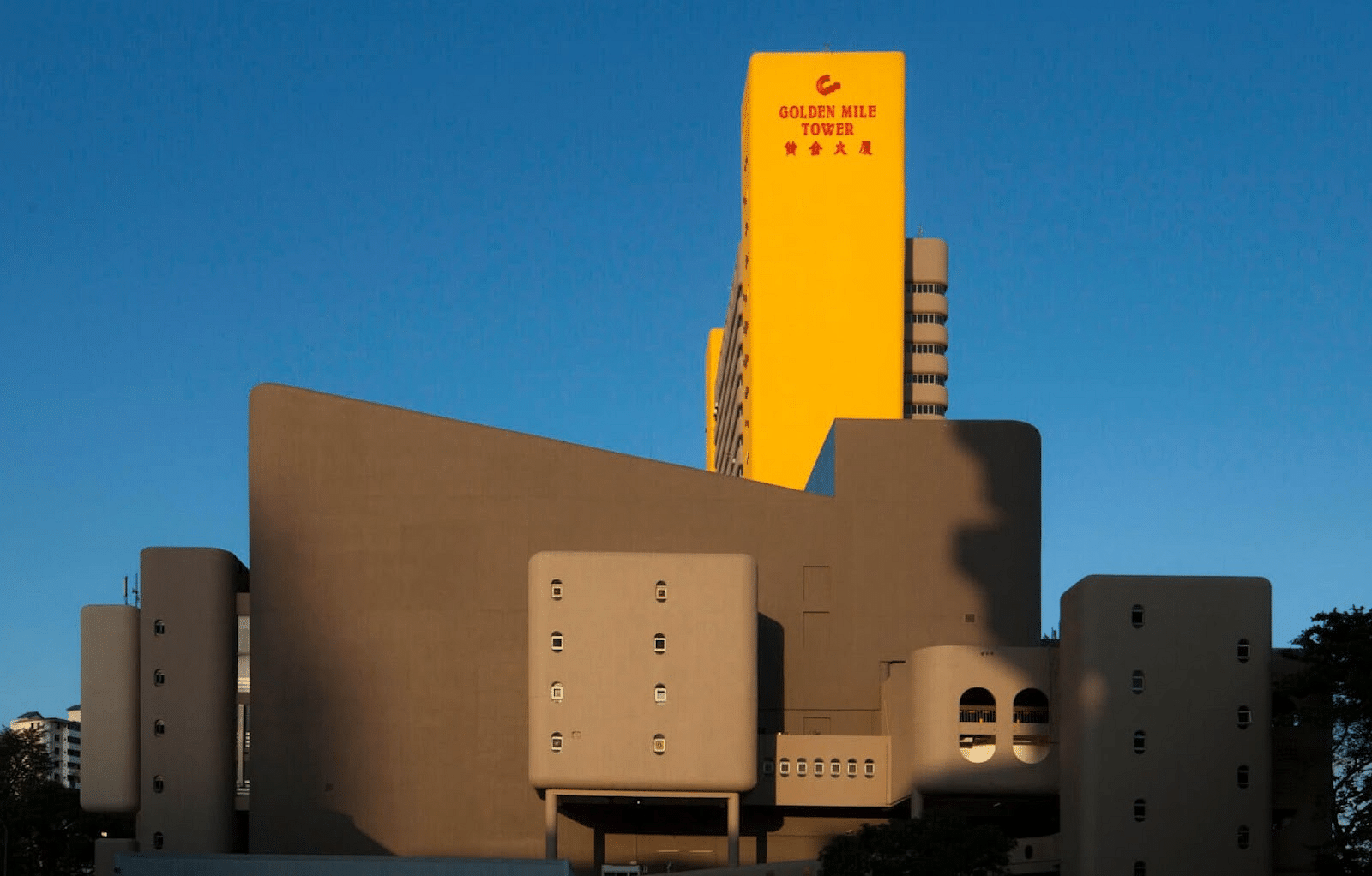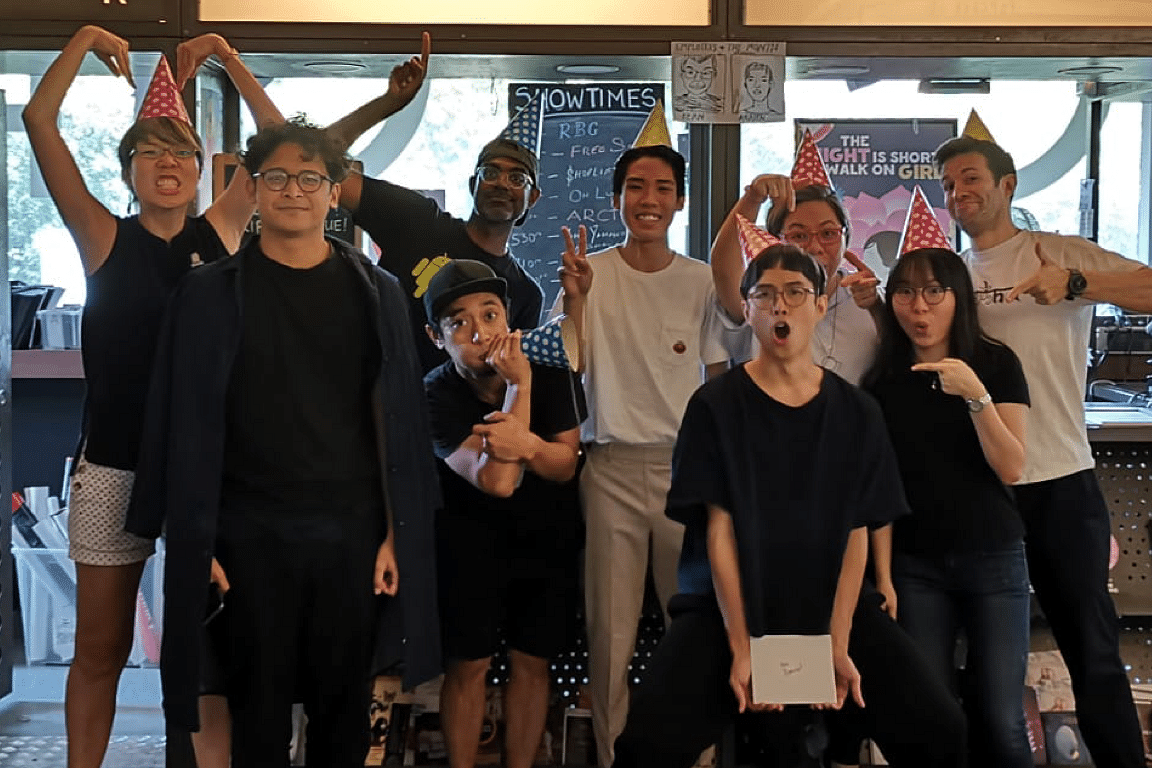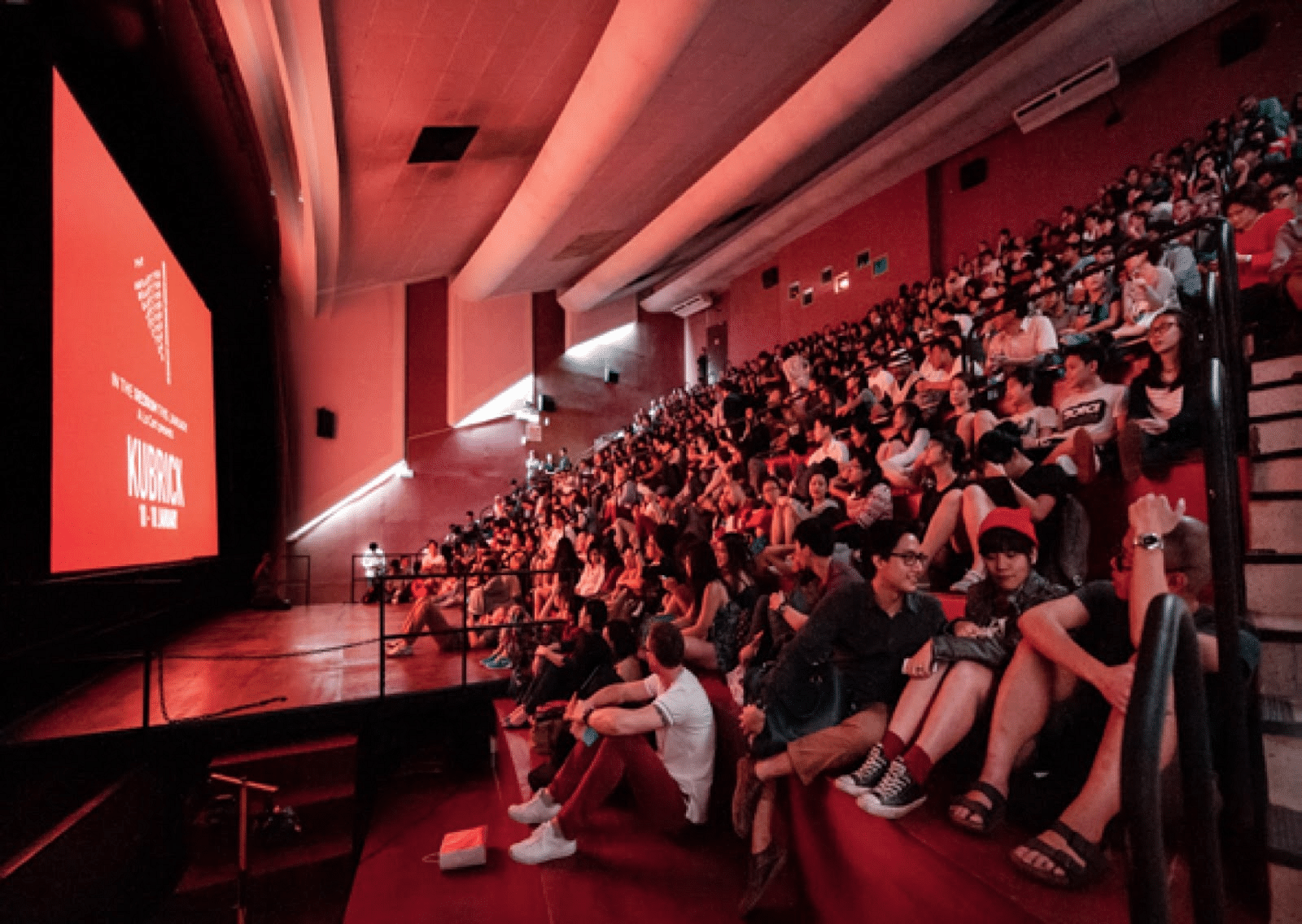
On going beyond average and creating a community: A peek at The Projector’s success story
By Jim James, Host of The UnNoticed Entrepreneur.
Karen Tan is the Founder and Chief Executive Officer (CEO) of The Projector. In the new episode of The UnNoticed Entrepreneur, she talked about the community-based theatre and cinema space and how she managed to build Singapore's leading independent film community. She also touched on how she gets distribution and showing rights for movies that otherwise wouldn’t be aired.
A Space for Cinema, Arts, and Culture
Karen loosely describes The Projector as an independent cinema, and they’re an art and cultural space as well. Their tagline from the start is “Not your average cinema.” They literally and actively strive to be what it says on the tin.
They show a lot of alternative film content — anything from art houses to indie to foreign film festivals to National Theater Live productions to anime and cult classics such as “The Godfather” and “Saturday Night Fever.”
They also have a space for non-film content, such as comedy nights and film quizzes. They also partner with animal charitable groups to do cat adoption drives. And their playing host to many non-film contents is deliberate.
The whole point is to create a space in Singapore that people can think of as a mental breathing space where things aren’t quite so polished and finished and are rough around the edges. It’s relaxed and open. And, crucially, people can come into their space, be themselves, engage with interesting content (which they may or may not be familiar with), and hopefully have a sense of curiosity.
Image from The Projector
They hope that people can come away with a sense of discovery of something they may have never encountered before. This is one of the reasons why Projector exists: to create this atmosphere and space for alternative communities and interest groups to feel at home.
They also love to have people come and inhabit the space side-by-side. For instance, they could have an eco-film festival next to a funk-rock band performance and an art market happening in the lobby at the same time.
Though these are vastly different groups of people, having them all come to the same space and enjoy being next to each other is interesting. Sometimes, they also get to sneak a peek at what others are doing, and it helps them break out of their own silos — or just get a bit more curious about what else is out there.
In sum, it’s about creating an open space where people won’t be judged. It’s for people with curious minds.
Crowdfunding Success
Karen is really grateful that The Projector is still around, especially after COVID. She’s grateful for their supporters and community who stuck with them the whole time. Because when they were starting, it was about having crucial pieces of a puzzle to get themselves noticed and get the business on the radar.
They’ve been around for about eight years now. And when they started, they stumbled upon an unused and abandoned 1970s-vintage cinema in the centre of the town. It was in a building that was in a blind spot for most of the public.
The challenge was not to be dependent on footfall or passersby. They had to put themselves on the map and get people into this mall they’d forgotten about, up to the fifth floor, which they didn’t even know existed.

Image from The Projector
They thought that crowdfunding would be a way to unlock it because, apart from raising the money they needed, it was crucially a marketing exercise for them.
It was about bringing together like-minded individuals from the creative community or people interested in film in Singapore — people who feel they could fill a gap in the landscape. It was about bringing them together and making them feel like a part of a community project because, basically, they were putting money where their mouths were, and now, they have the chance to take ownership of the project as well. It was about making them invested in its success.
This was The Projector’s first step in terms of gathering the community and bringing people together. And it happened even before they opened their doors. In a way, the business was community-led. They went out and got the people behind them before they even started opening the doors and screening films.
When they started the campaign, they weren’t sure if people would attempt something quite naive or crazy at the time. But the response was overwhelming and heartening. That crowdfunding response gave them that push to say, Okay, let’s go for it. They realised there’s a certain amount of support, and it will be there once they’ve opened the doors.
Karen still remembers their first screening when they didn’t even have the capability to sell tickets yet. They had an open bar, and they had a cash box. They didn’t have an established channel to procure films; they only had friends who were directors and contributed some films.
In their first week, they screened two short films back-to-back by local directors. They invited those directors to come on stage and do a question-and-answer (Q&A) portion. They simply put the word out on Facebook and saw who would appear. Karen and her two other Co-Founders said to themselves that they would be lucky if they sold 40 tickets. Then, 350 people showed up.
It was phenomenal: They were seated on the steps. The theatre was rammed. It was a really special atmosphere because one could feel the energy in the air, and the people were excited. It was like being part of something bigger and coming together.
For their crowdfunding, they used Indiegogo, and they got a few hundred people through that platform. Interestingly, they also had people who supported them from abroad and travelled quite a bit to attend the event.
Acquiring Films for Screening
Image from Pexels
In The Projector’s space, there are all sorts of mainstream and indie film posters such as “John Wick,” “Women Talking,” and “Plan 75.” And, as Karen describes, it’s a wild west environment in film procurement.
The large titles come through big distributors or the so-called commercial big boys who now engage with them. They also work closely with local independent film distributors. They are the ones who sometimes give them exclusives because they’re confident that given The Projector’s brand and the nature of their audience, The Projector will be better placed to fill the theatres for their films as opposed to the commercial big boys.
And for Karen, it’s also interesting to be able to support a local non-mainstream film ecosystem.
Leveraging Social Media Spaces
For their marketing, they’ve been using Facebook, and now they’re also on Instagram and Tiktok. They decided early on that they would engage their customers and audience via social media instead of traditional media channels for two reasons.
First, social media allows them to have a personality and a voice. And The Projector has a certain voice when it speaks on socials — there’s a certain irreverence, they like puns and silly jokes and try to be witty. They figured social media would allow them to project that personality while engaging more quickly and intimately with their audience.
Also, it is cheaper than traditional media.
Over the years, they learned that they’ve got to evolve with social media trends. Facebook has fallen back a little bit. So, they’ve added Instagram, TikTok, and Telegram. The point is that they’re also learning. It’s a constant evolution. They must keep up because it’s not a game where one can rest on their laurels.
An Emphasis on Human Touch
The Projector also has a membership program. When people subscribe, they can get discounts and a certain number of tickets. They do that to keep their members engaged. And their dream is to have enough time and bandwidth to build out more members’ events.
This is their roadmap because they recognise that people keep coming back.
And for Karen, word-of-mouth referrals are the best way to convince a new customer to come instead of saying whatever a brand likes in an advertisement. Nothing beats the statement of a friend who says an event was great and invites others to come along next time.
This is also coupled with their effort to give everyone the best possible experience and customer service.
Image from The Projector
In this day and age, especially in Singapore, where labour costs are high and cinemas are pivoting toward automation and improving productivity, doing it can be old school. But they at The Projector have taken a different approach. They want people to come and interact with a human — a human who will remember their names, crack a joke, or offer them a drink.
It’s a different experience that they’re trying to craft for their customers, and it’s something that their customers will then remember and want to return for.
A Challenge for Singapore’s Leading Alternative Cinema Hub
Over the last six months, The Projector has been trying to get more mainstream audiences into their halls. It meant showing “Avatar” and other blockbusters that do well in mainstream theatres. They thought of trying to get a bit of that pie in addition to what they already have, thinking it could supplement their revenue.
When they first thought about it, they thought it would be a piece of cake. They could offer a better experience by giving the best cinema food in Singapore. They could offer a better vibe. They could entice people to go to them instead of commercial operators who serve overpriced nachos.
But when they tried it, it just hasn’t worked for some reason. And they’ve been trying to unpack why that is the case. One of their hypotheses is that they are perhaps a victim of their own brand success.
They’re known for alternative content and things that aren’t mainstream. If a cinema-goer wants to watch “Tár” or “The Wailing,” Projector is the natural place to go. But if they will watch “Avatar,” they will go to Golden Village. So, they haven’t been able to break out of that or change how people think about their brand. It’s been a lot stickier than what they anticipated.
Image from The Projector
It’s All About Creating a Community
There are many tricks entrepreneurs can do. They could pull bells and whistles and all that.
But, fundamentally, getting noticed is about getting people behind them. It’s about getting people to feel like they’re part of whatever they’re creating and have a sense of ownership of the brand — a sense of pride that they’re part of the community. Because these are the people who will be the strongest advocates and brand ambassadors a brand could have.
Therefore, entrepreneurs must think about what these people want and allow them to help shape whatever they’re creating.
For instance, The Projector has done two pop-ups in Singapore in addition to their flagship theatre over the last two years during COVID. When crafting those spaces (for one pop-up, they took over an existing cineplex that had shut down), they engaged with their supporters and asked them to come down and help them paint the ceilings black, string up the light bulbs, and contribute art. They could sign their names on the centre pillar. It’s not a huge thing, but it has given people a sense of ownership because they literally helped create the space.
This is an example of a different kind of engagement with one’s community and audience. But if an entrepreneur can build it that way, there will be that sense of pride that will get people behind them.
To find out more about Projector, visit www.theprojector.sg.
The UnNoticed Entrepreneur podcast is sponsored by Prowly, the all-in-one software for leveraging PR activities. Boost the media relations game for your business - get more coverage while saving time and money on everyday tasks.
This article is based on a transcript from my podcast The UnNoticed Entrepreneur, you can listen here.
Cover image by The Projector






